Coal and Petroleum
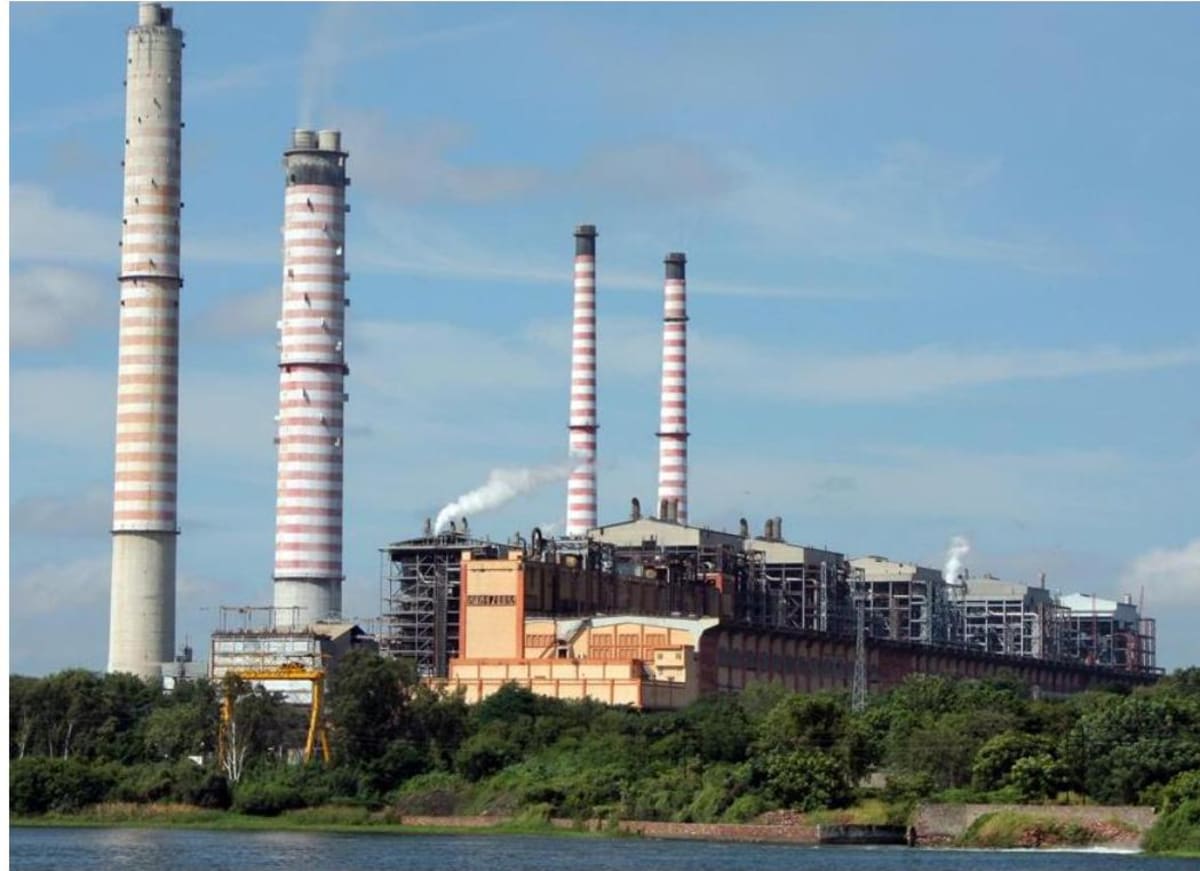
"Carbon and hydrogen are the elements which make major part of coal and petroleum."
Fossil fuel is a hydrocarbon containing material such as coal, oil and natural gas.
- Coal is a fuel which continues to be used directly (heating) and indirectly (producing electricity).
- We also use petroleum product and compress natural gas (CNG) as a fuel.
1.0Introduction
We use so many materials catering to our basic needs on a daily basis. For example, we drink water, eat food, breath air, use equipment's etc. Some of these are found in nature, while some are made by human efforts. We can classify these resources as natural and man-made.
- Natural resources:
The resources which are obtained from nature are called
Forests are natural resources natural resources. For example, sunlight, air, forests, etc.
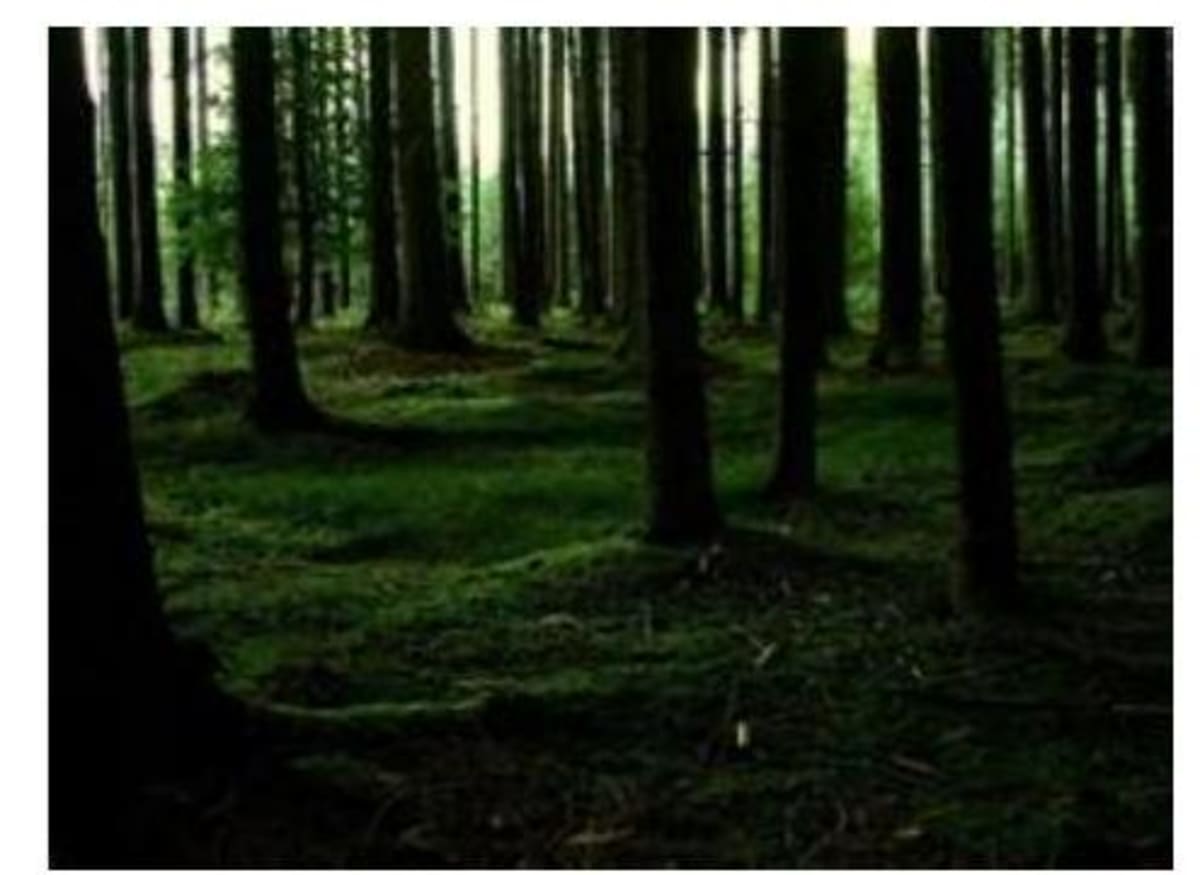
- Man-made resources: The resources made by human beings are called man-made resources. For example, plastics, cement, etc. Some objects are man-made and some are found in nature. In this chapter, we will study in detail about some natural resources i.e. coal, petroleum and natural gas which are used as primary fossil fuels.
2.0Classification of natural resources
Types of natural resources
Natural resources can be broadly classified into two kinds:
- Inexhaustible natural resources: These sources are present in unlimited quantity in nature and are not likely to be exhausted by human activities. For example, Sunlight, air, etc.
- Exhaustible natural resources:
The amount of these resources in nature is limited, they can be exhausted by human activities.
For example, Forests, coal, petroleum, minerals, wild life, natural gas, etc.
Wildlife is an exhaustible resource, so we have to take care of it.
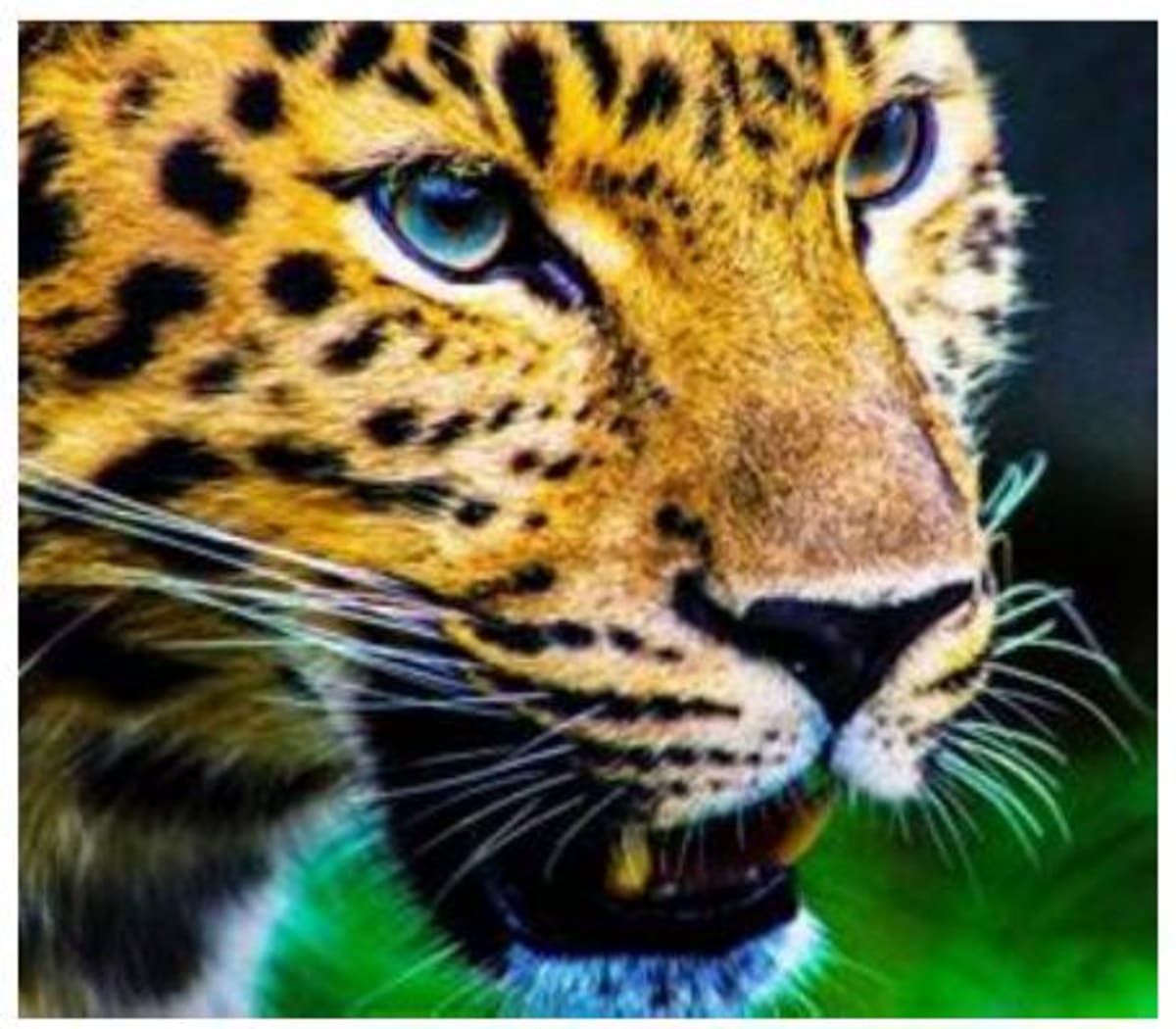
- Extracting, processing and using natural resources can cause environmental problems such as : air, land and water pollution, destruction of ecosystems and decrease in biodiversity.
Q. Can sunlight get exhausted by human activities?
- Explanation Sunlight is an ultimate source of energy available free of cost. It cannot be exhausted by human activities as it is produced by a natural process of fusion inside the sun. Due to this nuclear fusion extremely, large amount of energy is produced which comes in the form of sunlight.

3.0Fuel and its Classification
A fuel is a substance, which burns in air to produce energy without releasing harmful gases in large quantities. Fuels can be classified as natural (primary) fuels and derived (secondary) fuels. If a fuel is present in its natural state, it is called natural fuel. If a fuel is processed to improve its quality, it is called derived fuel.
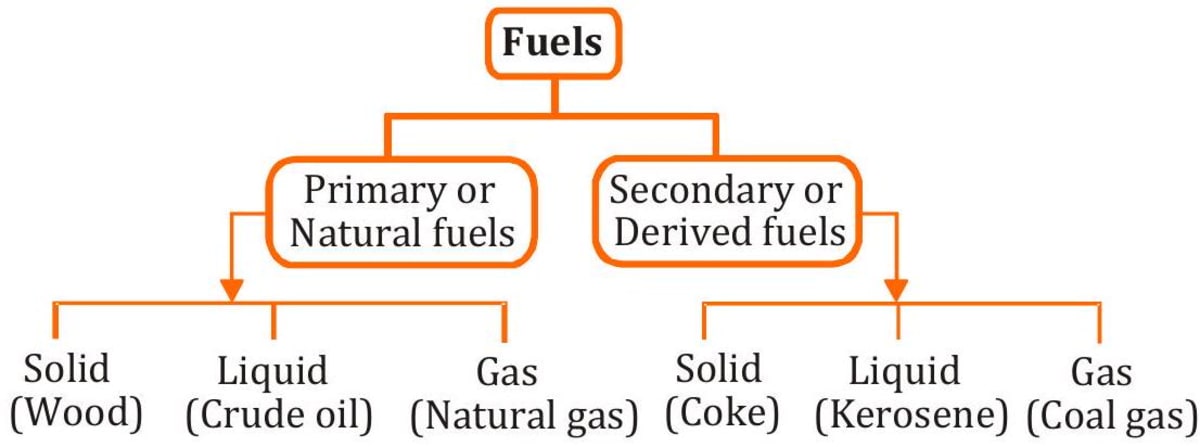
Calorific value of a fuel
Calorific value of a fuel is the amount of heat energy liberated by complete burning of a unit mass or volume of a fuel. For liquid or gaseous fuels, volume of fuel is considered while for solid fuels mass of fuel is considered to find out the calorific value. Calorific value
Characteristics of an ideal fuel
(1) It should have a high calorific value. (2) It should not cause any pollution or should not produce harmful gases on combustion. (3) It should be of low cost and easily available. (4) It should be easy to handle, store and transport. (5) It should have moderate ignition temperature. (6) It should have moderate rate of combustion.
4.0Formation of Coal
Fossil fuels Exhaustible natural resources like coal, petroleum and natural gas were formed from the dead remains of living organism (fossils). So, these are called fossil fuels. Coal and petroleum are very important natural resources and play a vital role in modern society. They are found in the earth's crust.
Coal: Coal is a complex mixture of carbon, hydrogen and oxygen compounds. Some nitrogen, sulphur and phosphorus compounds are also present in it. It is found in coal mines deep under the surface of earth.
Story of formation: It is believed that millions of years ago, the ground below the forests was split open by natural forces such as earthquakes and volcanoes. The forests got buried under the surface of earth. Thus, the plants had no contact with oxygen. Successive layers of sediments sealed the buried plants. Over millions of years, these deposits were subjected to tremendous pressure and heat finally transformed them into coal.
Carbonisation: The chemical process involved in the transformation of plant matter into coal is called the carbonisation of plant matter.
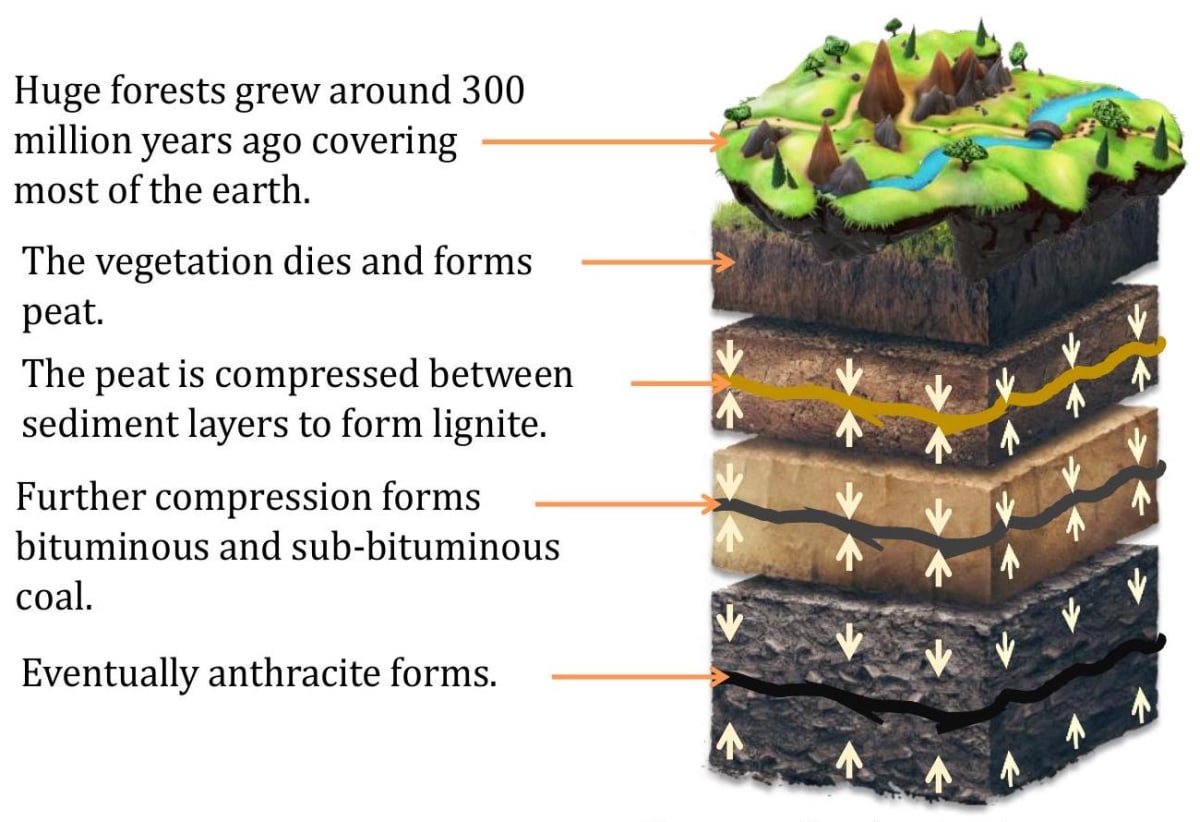
- The carbon content depends on the time taken by the coal to be formed.
- Carbon content decides the quality of coal and it is different in different types of coal.
- If the carbon content of the coal is high then it come in a category of superior quality coal.
5.0Varieties of Coal
There exist different varieties of coal depending on the carbon content. The carbon content of coal depends upon the variety of the coal. The higher the temperature and pressure of the Earth and the longer the coal has been buried under the Earth, the more is the carbon content in it. So, the different varieties of coal are as follows (1) Peat (2) Lignite (3) Bituminous coal (4) Anthracite coal
Peat: It is the youngest variety of coal which is light brown in colour. It contains minimum carbon content and produces less heat and more smoke on burning. Its calorific value is 10 to . Lignite: It is known as soft coal. It is also brown in colour and contains more carbon than peat. Its calorific value is 15 to . Bituminous coal: It is the common household coal. It is the most abundant and is compact, black, contains more carbon and produces more heat than peat and lignite. Its calorific value is 30 to . Anthracite coal: It is the hardest coal containing maximum carbon. It burns with difficulty due to presence of very low volatile matter. Therefore, it is not used for household purposes, it is mainly used for industrial purposes. Its calorific value is 28 to .
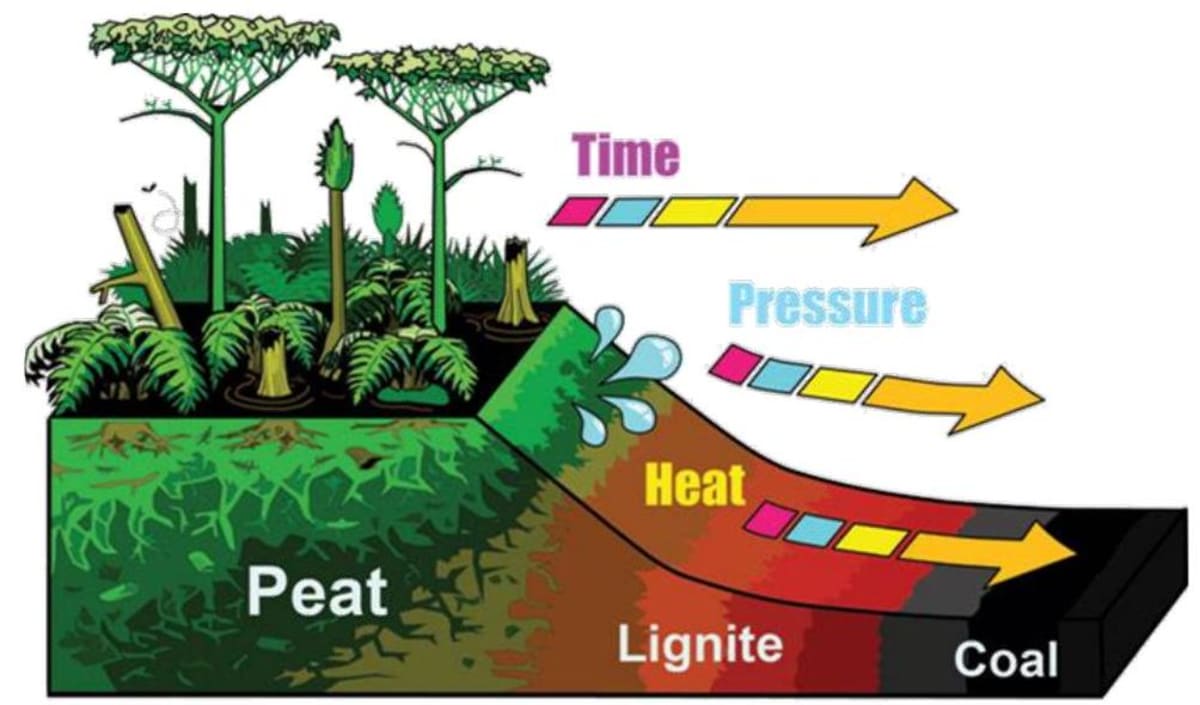
6.0Destructive Distillation of Coal
The process of heating coal in the absence of air is called the destructive distillation of coal. Coal contains a number of elements such as carbon, hydrogen, oxygen, nitrogen and sulphur. When coal is heated in the absence of air, a number of products are obtained. The main products obtained by the destructive distillation of coal are as follows: (1) Coke (2) Coal tar (3) Coal gas
When air is passed over red hot coke then producer gas ( ) is formed which is also used as a fuel in industries.
- Coke: Coke contains carbon. It is porous, tough,
black and the purest form of coal. Like charcoal, it is a good fuel and burns without smoke. It is largely employed as a reducing agent in the extraction of metals from their ores. It is also used in making fuel gases like water gas and producer gas.
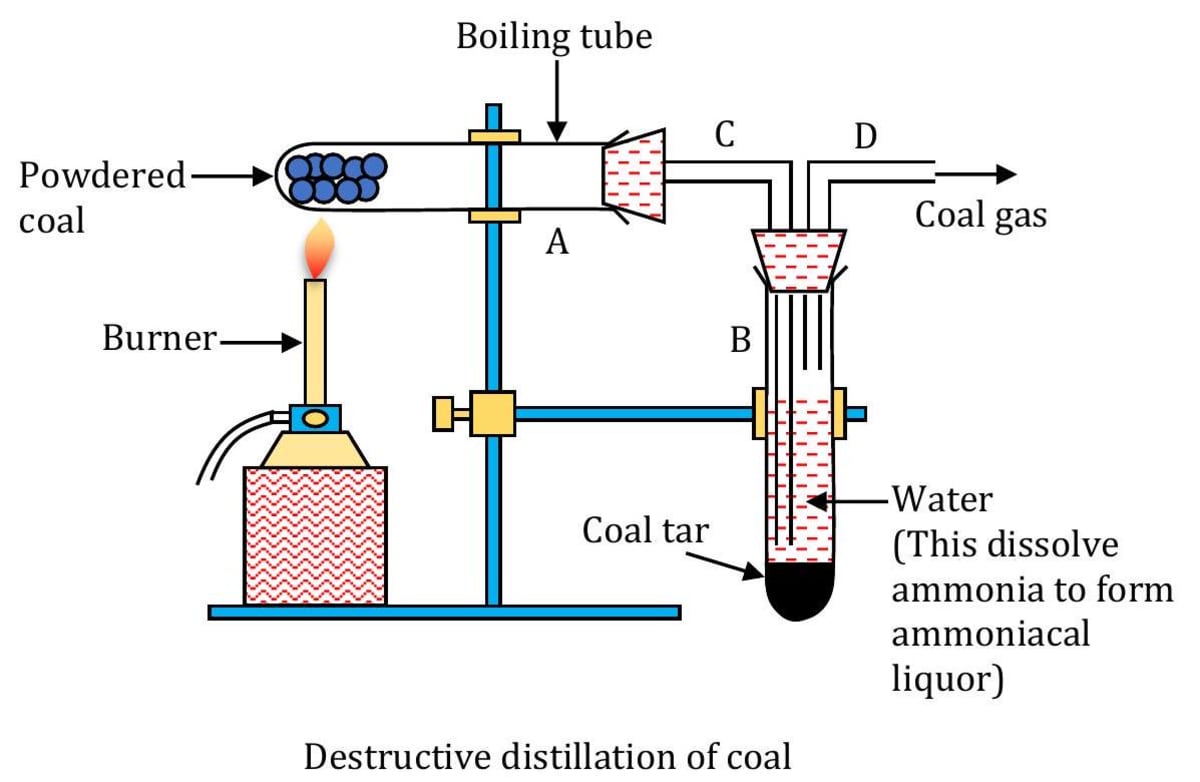
- Coal tar (liquid): Coal tar is a mixture of different carbon compounds. It is a thick, black liquid with unpleasant smell. The fractional distillation of coal tar gives many chemical substances which are used in the preparation of dyes, explosives, paints, synthetic fibers, drugs and pesticides. Some of these chemical substances are benzene, toluene, phenol and aniline. Naphthalene balls used to
When steam is passed over red-hot coke then water gas ( ) is formed which is also used as a fuel in industries. Coke steam (water gas) SPOT LIGHT repel moth and other insects are also obtained from coal tar. Note: These days bitumen a petroleum product is used in place of coal tar for metalling the roads. 3. Coal Gas: Coal gas is mainly a mixture of hydrogen, methane and carbon monoxide. The gases present in coal gas are combustible and hence, it is an excellent fuel. It has high calorific value. It was used for lighting houses, factories and streets in Mumbai until 1950. It was also used for cooking earlier.
Uses of Coal
- Coal is used as a fuel to cook food and also in industries.
- Earlier, it was used in railway engines to produce steam to run the engine.
- It is also used in thermal power plants to produce electricity.
- Coal is also used as fuel in various industries.
- Coal is processed to get some useful products. These products are obtained by a process called destructive distillation.
7.0Petroleum and Origin of Petroleum
It is dark brownish to green coloured viscous liquid fossil fuel. It has strong foul smell due to the presence of sulphur containing compounds in it. It is commonly called as crude oil. Many useful substances are obtained from petroleum which can be used for the manufacture of detergents, fibres (polyester, nylon, acrylic etc.) polyethene and many other plastics. The economy of a nation depends to a great extent on petroleum wealth, that's why petroleum is called the black gold.
Its name is derived from Latin words Petra (meaning rock) and Oleum (meaning oil). Thus, petroleum literally means "rock oil". The first oil well was drilled in Pennsylvania, USA in 1859. The oldest oil refinery in India is located at Digboi. Oil's biggest producer is Saudi Arabia followed by Russia.
Origin of petroleum
Petroleum is a complex mixture of solid, liquid and gaseous hydrocarbons, mixed with salt water and earthy particles. It is always found trapped between two impervious rocks. It is believed that petroleum is formed by the anaerobic decomposition of extremely small sea animals and plants which got buried in the sea bed millions of years ago. Let us see how this happened.

Occurrence of petroleum:
Petroleum occurs at a moderate depth ( 500 m to 200 m ) between the 2 layers of impervious rocks. The petroleum is lighter than salty water and hence, floats over it. Natural gas is found above petroleum, trapped between the rock cap and petroleum layer.
Drilling of oil wells:
The hole is drilled in the Earth's crust and when it reached the rock cap, the natural gas comes out first with a great pressure. When the pressure of gas subsides, petroleum starts flowing out due to the pressure of natural gas.
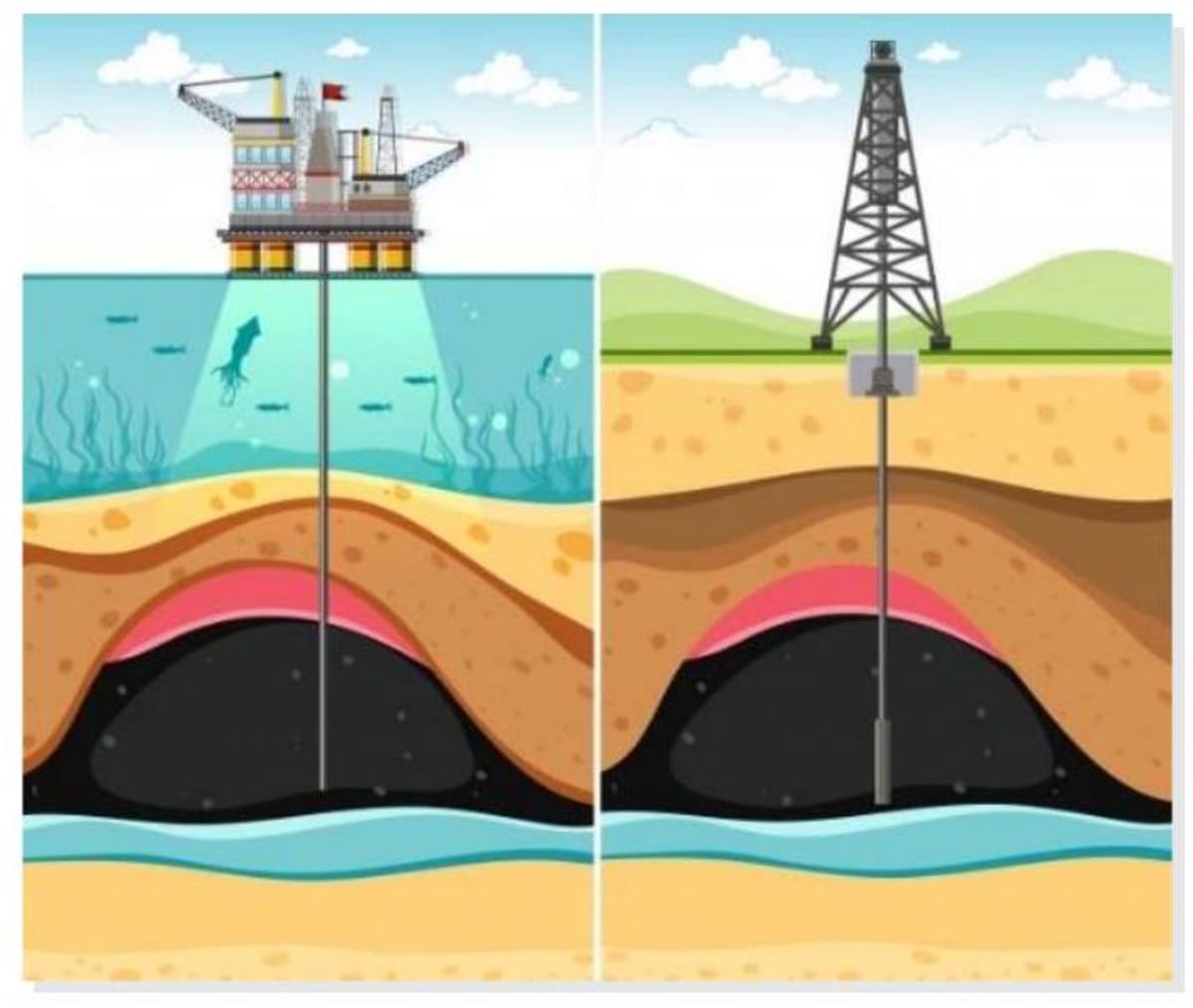
8.0Refining of Petroleum
Petroleum is a mixture of several hydrocarbons. It also contains water, salt and rocky materials. It cannot be used in this crude form either as a fuel or a basic material to produce other useful components. Before being put to use, it has to be purified or refined.
The process of separating the various components of petroleum from one another is known as the refining of petroleum. This is done by a process called fractional distillation which is based on the fact that the different components of petroleum have distinctly different boiling points.
In fractional distillation, crude petroleum is heated to a temperature of or slightly above in a furnace.

9.0Fractions of Petroleum and Uses
Uses of Petroleum
(1) Petroleum products are used as fuels. (2) Lubricating oils and Vaseline are used as lubricants. (3) Paraffin wax, products of petroleum is used for manufacturing candles, polishes, waxed paper, water proofing, etc. (4) Some of the by-products of petroleum after purification are used in the preparation of medicines, ointments, face creams and cosmetics.
Fractions of petroleum and their uses
- Uses of some important petroleum product.
Some useful petroleum products
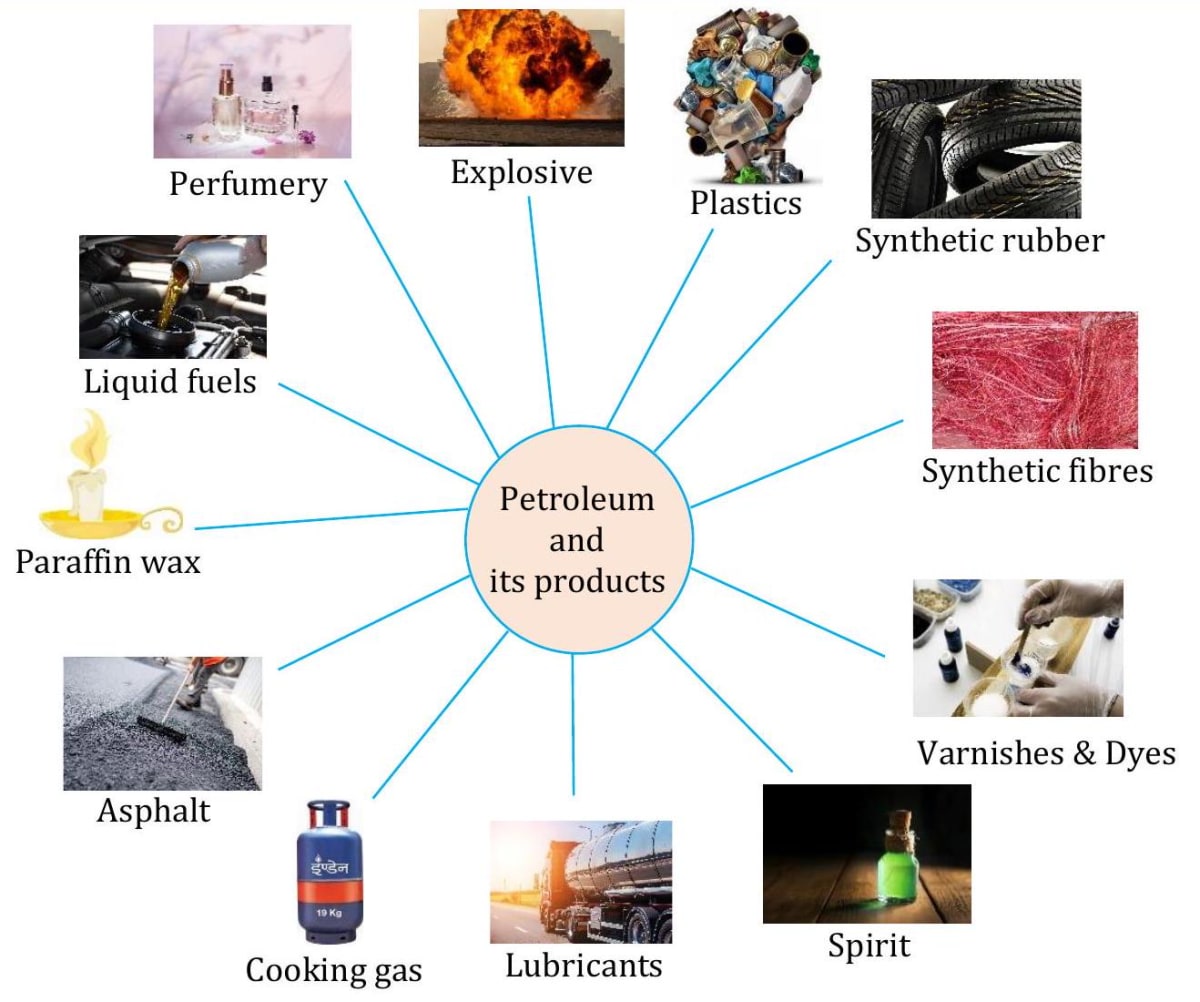
10.0Natural gas
Natural gas was formed millions of years ago along with petroleum when microscopic sea plants and animals died and got buried under the sand or mud. These plants and animals under anaerobic conditions changed to gas.
Composition
It consists mainly of methane (about 85%), ethane (about ), propane (about 3%) and butane. When natural gas is compressed at high pressure then it is called CNG (compressed natural gas). CNG is used for power generation. It is now being used as a fuel for transport vehicles because it is less polluting.
The great advantage of CNG is that it can be used directly for burning in homes and factories where it can be supplied through pipes. Such network of pipeline exists in Vadodara (Gujarat) and some parts of Delhi.
Occurrence
It is generally found trapped between impervious rocks, sometimes along with petroleum and sometimes without petroleum. In our country, natural gas has been found in Tripura, Rajasthan, Maharashtra and in the Krishna Godavari Delta.
11.0Uses of natural gas
(1) As a fuel - It has a very high calorific value of . (2) As a source of hydrogen and carbon

- Always try to use CNG vehicle because it is commonly referred to as the green fuel due to it's lead and sulphur free nature. CNG reduces harmful emissions.
12.0Conservation of Fossil Fuels

Sunlight can be used as alternative source of energy
It is believed that it took millions of years for the dead organisms to change into coal, petroleum or natural gas. Furthermore, their known reserves are limited. Another problem with fossil fuels is that they are steadily increasing air pollution, their use is linked to global warming. So, it is important that we use fuels only when it is absolutely necessary. In this way, we can save these fuels for the manufacture of many substances which are dependent on petrochemicals.
For energy purpose, we must look for alternative sources, such as solar energy, tidal energy, wind energy, etc. Furthermore, fossil fuels will be available to future generations for more useful products.
In India, the Petroleum Conservation Research Association (PCRA) offers the following tips to conserve petrol and diesel while driving. (1) Drive at a constant and moderate speed as far as possible. Driving at a high speed or slow speed wastes a lot of fuel. (2) Switch off engine if you have to wait at traffic lights or for any other reason. (3) Check the tyre pressure regularly, low pressure or too high-pressure waste fuel. (4) Make sure that you send your vehicle to garage for regular maintenance.
13.0Basic terminology
- Natural Resources: Resources which are obtained by nature.
- Man-made Resources: Resources made by human beings.
- Exhaustible: Resources which is present in limited quantity.
- Inexhaustible: Resources which is present in unlimited quantity.
- Fuel: Substance, which burns in air to produce energy.
- Derived fuel: The fuel which is obtained from primary fuel is called derived fuel.
- Calorific value: It is the amount of heat energy liberated by complete burning of unit mass or volume of fuel. Calorific value
- Fossil fuel: Fuel which were formed from the dead remains of living organisms (fossils).
- Destructive distillation: The process of heating coal in the absence of air is called the destructive distillation of coal.
- Coke: Substance contain of carbon.
- Coal tar: Thick, black liquid which is a mixture of more than 200 compounds.
- Coal gas: Use as a fuel, it is a mixture of hydrogen, methane and carbon monoxide.
- Black gold: Petroleum is also called black gold.
- PCRA: Petroleum Conservation Research Association.
- Ethyl mercaptan: Substance having foul smell, use to add in LPG to detect it leakage.
14.0Memory Map

Related Article:-
Join ALLEN!
(Session 2026 - 27)